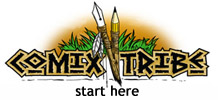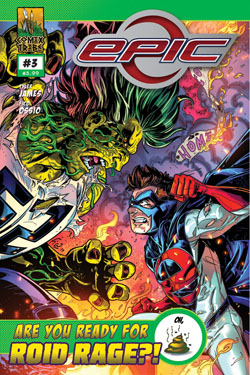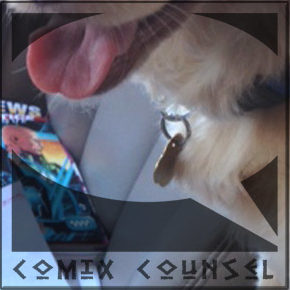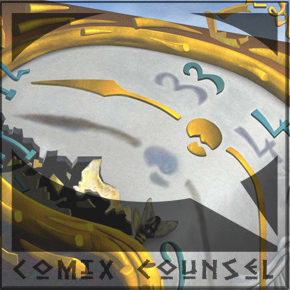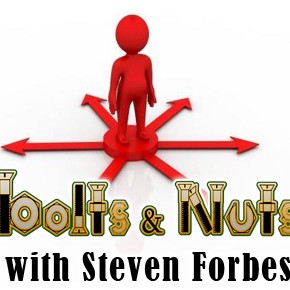Reflecting on Retailer Outreach Through Kickstarter
As incredible a platform as Kickstarter is, direct retailer engagement through it has been a struggle for most. Be it Kickstarter’s out-right prohibition of offering the kind of bulk discount pricing retailers expect, or the reluctance of retailers to take chances on unproven talent, or even known talent distributing in a new way, Kickstarter simply is not set up for direct retailer engagement…
…unless you get creative. In this column, I talk to Alex Wilson, who’s using Kickstarter to pre-sell his Eagle Award Winning “The Time for Reflection” and involving retailers in a novel way.
1) As I’ve seen first hand, Kickstarter can be a powerful tool for the right project. Of course, every creator comes to KS with different goals and for different reasons (besides simply raising a boat load of cash.) So, Alex, why Kickstarter, why this project, and why now?
After winning the Eagle, and then not having anything tangible to show for it yet beyond bragging rights, our initial goal was just to see our story in print. It appeared in the program at the London Comic-Con, but this was our chance to see it on this side of the pond. The idea that we could use this for other purposes… to turn a short story into a worthwhile standalone booklet, to use it as a way to introduce ourselves to retailers, and to experiment with crowdfunding vs retail business models… those came later.
We won the award in May. We’ve both been busy with other projects (great problem to have!), and this is my first venture into crowdfunding or self-publishing beyond a few minicomics and a novelette reprint on Kindle, so it took some research and work before I was willing to step into these waters. A 2012 Eagle Award is going to have a little less cache next year, so all things considered I’m glad we were able to launch this campaign as quickly as we did.
2) Retailers have been slow to embrace Kickstarter. Many have admitted to supporting the model as a fan, but the terms and unpredictable fulfillment schedules of most independent Kickstarters would be a recipe for disaster for shops relying on that product. You’ve taken a different approach to get retailers involved. Tell us how you’re using KS to engage retailers?
For any pledge of $3 or more, I’ll not only send the backer a copy of the booklet, but I’ll also ask her or him for a favorite LCS (Local Comic Shop) or other independently owned retail bookstore. And I’ll send that store a copy as well. The store can do whatever they want with it: sell the comic for the cover price, throw it in the dollar bin, or–as I say in the Kickstarter video–give it to any customer the store doesn’t want as a customer anymore. The store can also say no or “get the hell away from me with that thing,” in which case I’ll ask the backer for an alternative.
It’s an extension of what my relationship with a new store might be if I were to show up for a reading or signing and brought my own stock to sell. Typically, I’d split the revenues of my books with those stores. While that would be less practical in this space (not to mention a violation of Kickstarter rules), this does allow us to introduce ourself to those stores with “Here’s what we can do for you,” rather than “Here’s what we want you to do for us.”
In the final two weeks of the campaign, I’m hoping to launch some additional incentives for stores which receive the most recommendations/free copies, but this initial success (another one of those great problems to have) has made my planned promotion schedule more… fun than predictable so far.
3) Most of the ComixTribe readership are creators themselves and many have plans to run their own KS campaigns someday. One of the things I’ve been wary of is the “worst case success” — where creators fail to account for how difficult and expensive fulfilling rewards will be and end up further in the hole than where they started. For the $3 pledge level, the most popular on your site, you’re offering two copies of the physical book — one to the backer and one to the shop of their choice. $3 won’t even cover the cost of shipping…What’s your thinking here?
It was a calculated risk. I only needed the Kickstarter to fund part of the print run, so it wouldn’t have been hard to meet those expectations.
Still, with the envelopes, Kickstarter fees, shipping, and everything else, I knew that the worst case scenario (in which our Kickstarter was still fully funded… so it’s kind of like that old saying about sex: even when it’s bad, it’s still pretty great!), where I would actually _lose_ money, would require three things to be true:
First, the $450 initial funding goal would need to be met entirely with 150 backers at the $3 level. Second, none of those backers or recommended stores could be local to me (so I wouldn’t have been able to hand-deliver copies to my friends, etc, and therefore save on shipping). And third: no two backers could recommend the same store, so I couldn’t double-up and save on shipping _anywhere_.
And even if all three of these things came true (unlikely), those 150 pledges would _still_ mean that 300 copies of my print run were bought, paid for, and in the hands of readers, or in the hands of those who know better than I do how to _reach_ new readers. All for just a few dollars’ loss total. Much smaller risk than even getting a table at a convention.
My risk was averted rather quickly, when we reached full funding in the first eight hours with, I think, the first 16 pledges. My spreadsheet is complicated, but it more than justifies the tiny fraction of my hard drive on which it resides.
4) Having just run a Kickstarter, I know how powerful a tool those spreadsheets can be in planning these. I’m still just curious about your math. After all, “hitting your goal” isn’t necessarily as important as HOW you hit your goal. Your $3 pledge level will, have you, on average, going into your pocket AT LEAST $1 a book…possibly more. What if you got 1,000 pledges at that level? What if you got 5,000? There’s the potential you could end up in the red several times your project goal. That wasn’t a concern?
Yeah, that would be true if the comic’s dimensions were bigger: it fits in a 6×9 envelope, and therefore can qualify for Letter Rate rather than Large Envelope Rate; the Limited Edition is larger.
It also might be true if the comic had more pages or if my print run were smaller: even if we barely met our initial funding goal, I planned to pay for 2,000 copies minimum, partly to get the cost per issue where I wanted them, but also so for the next five years I could place on my convention tables an attractive $2 or under takeaway item/introduction to my work, which potential fans could grab after having trouble justifying $20+ to lug around a heavy graphic novel by a relative unknown for the remainder of their convention afternoon.
1,000 pledges or more would be amazing. Even 2,500 (x2) would be about the equivalent of breaking the Diamond 300, right? I know what printer I’m using for the Limited Edition, but for the standard edition (the one at the $3 reward level), I might work with a different one. I did my test printing through the former, and am very happy with the result. And I’ve talked to (and seen, held, and purchased the finished product of) those who have used the latter.
Both printers have quoted about the same number at 2,000 comics, but with one I can continue to take advantage of economies of scale beyond those numbers and I have quotes above and beyond the quantity where I have a small but definite margin.
And of course if I don’t have any repeats when 1,000+ different people recommend their favorite comic book stores, it probably won’t be my math that’s messed up. I don’t spend a lot of time worrying about runaway success, but if I did… I”d dread more the extra workload. (Which I’m sure you’re still dealing with. I wish you well. And I have _not_ budgeted for any additional health care costs from potential stress.)
5) Many creators seem to using KS lately as a referred sales channel. However, there is still the notion that KS should actually Kickstart something…What do you hope KS will help you Kickstart, when you think about where you’ll be in your career a few years from now?
We’re already in touch with stores who I don’t think would have any reason to communicate with us if not for our demonstrated confidence in them. We depend on them as readers and we’re ready to depend on them as a creators. We hope to be in the comics industry for a long time, so, when they see our future work in Diamond Previews or elsewhere, I want them as well as future readers to know they can depend on us as well. If this is what we can do with just a short story, imagine what we can do with a graphic novel.
And outside of ourselves, I hope any success or failure here inspires more experimentation with crowdfunding models, just as Alex de Campi’s digital-via-retailer Kickstarter experiment last year with _Ashes_ was one of the inspirations for this.
6) Finally, tell us about the book, “The Time of Reflection”, and how a guy from North Carolina wins the London Comic Con Eagle Awards!
I was a trial member at Comics Experience, a forum for creators not unlike those who frequent Comixtribe (and in fact that’s where I first head about Comixtribe). Someone shared the news there about The Huntsman’s Challenge/Eagle Award competition fairly quickly after it was announced, and from there it was all baby steps. I thought coming up with a story would be a fun challenge, so I came up with five or so broad ideas, including one loosely inspired by the title of the sponsor’s film (Universal Pictures’ “Snow White and the Huntsman”). I liked that one best at the time. If I’d considered from the start that, yes, we’d ultimately submit this story to something sponsored by a PG-13 film about Snow White, I probably wouldn’t have done such horrible things to the Snow White-based character in my story. I would have done them instead to Bambi.
But I felt the resulting script had merit, so I looked for an artist who might work with me on it. And when I found Silvio–someone who could not only ink and color his own work, but could do it exceptionally well–I realized we had all the potential pieces of a great finished comic if it came together right, so this might be worth the insanity of finishing it in the month we had before deadline.
The panel of judges (including pros Steve White, Tony Lee, and Mark Buckingham) selected us as one of only two finalists; we were shortlisted in both categories of “story” and “art” and of course Silvio’s work put us on top in the latter category. And then we won after an open voting period between us and a very worthy UK-based team.
Related Posts:
Category: Trenches
